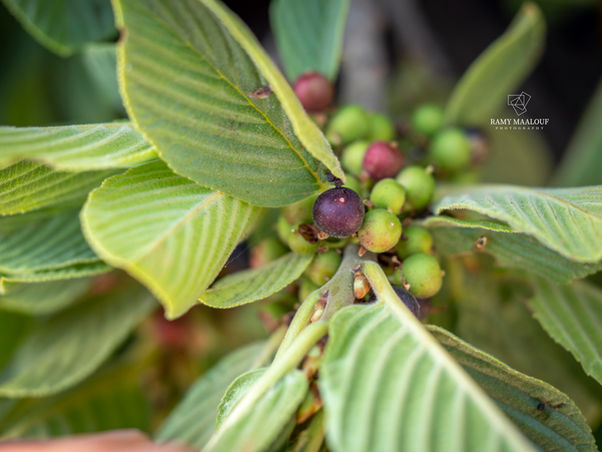Family |
Rhamnaceae
Rhamnus libanotica
Boiss.
Leb. Syr. Tur.
Rhamnus libanotica Boiss.
(First published in Diagn. Pl. Orient., ser. 2, 1: 119; 1854. Treated in Nouvelle Flore du Liban et de la Syrie, vol. 2, p. 556, Pl. CCXLI nº 4; 1970)
• Life-form & habit: Shrub up to 2 m tall, often reduced by grazing to low branching tufts among rocks; branches thick, spreading or ascending.
• Leaves: Large (≤ 15 × 7 cm), pubescent on both surfaces or subglabrescent; venation strongly pennate, margin finely dentate.
• Flowers: Dioecious, villous, in small axillary clusters.
• Fruit: Drupe oval, slightly hairy, black when ripe; seed oblong, triangular in section, with a groove bordered by a cartilaginous rim.
• Phenology: Flowers May – June.
• Habitat & elevation: Rocky mountain slopes; with Juniperus excelsa at high elevation up to 2 800 m and above.
• Lebanese distribution: Forêt d’Ehden, above Ehden, Jabal Kneissé, Jourd Hasroun, Qornet es-Saouda, Ouadi Fou‘ara, Hermon (Mt Lebanon and Anti-Lebanon ranges).
• Native range: Mountains of Lebanon, Syria, and Turkey (POWO).
• ⚠️ Taxonomic note: Historically confused with Rhamnus petiolaris Boiss. and sometimes compared to R. cathartica L. Differs by its short-petiolate, larger leaves and smaller, black, shiny, bitter drupes; represents a distinct high-mountain form of the genus in the Levant.








